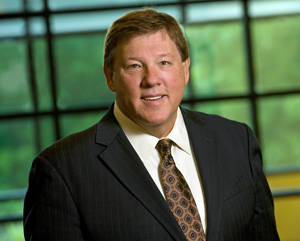
In February, EPRI issued a paper introducing what we call the Integrated Energy Network. Essentially, it encourages a wide circle of stakeholders to chart a common pathway to a future in which customers have the flexibility to use, produce, and manage energy as they choose, while improving access to reliable, safe, affordable, and cleaner energy. We are at the beginning of an unprecedented and fundamental transformation in the ways we live, work, and relate to each other. In contrast to previous periods, we see accelerated innovation and the promise for systems to change exponentially rather than at a linear, sequential pace.
Our progress along this path in the next few years will be defined by how stakeholders can refine the thinking presented in this paper, while developing broader approaches to both regulation and science and technology innovation.
What do we need to accomplish as we move forward on the path? Here’s how the paper sums this up:
- Manage energy and natural resources as an integrated system;
- Guide an efficient transition to much more digital, dynamic, and networked energy systems;
- Accelerate the development of cleaner energy technologies—supply, demand, delivery, and storage technologies—that can operate more flexibly;
- Unleash the opportunities for efficient electrification; and
- Create new business and regulatory models that build on the strengths of today’s energy infrastructure while taking advantage of new innovations.
Because these sound familiar, we may not realize how much challenge and opportunity they present us. To appreciate this, let’s consider the world in 1804—about the halfway mark in the Industrial Revolution, and when the human population reached 1 billion.
The Industrial Revolution created major social changes and opportunities, freeing us from unproductive manual tasks. It owed its development initially to the power of flowing water to turn machinery. With windmills also supplying energy to early industry, this revolution was to a significant extent launched by renewable energy and turning wheels.
By 1804, the coal-fired steam engine was poised to take industrial production to an entirely new level—and not just to power factories but to power the machines and tools that would make possible today’s electric grid, and to make entire populations mobile. And while steam engines freed industry from limited flowing water or blowing winds, the resulting growth placed greater demands and stresses on fresh water and clean air.
In the 200 years following humanity’s 1 billion benchmark, global energy consumption has grown more than 20 times as our population has increased to 7.5 billion on a trajectory that can at times seem destined to continue indefinitely. Some forecasts project the 2050 population at 9 billion. That will certainly create new challenges for all energy resources including water, which is profoundly more limited in the urban world of 7.5 billion people than in the largely rural world of 1 billion. We are putting a great deal of scientific focus on precisely what our growing energy appetite means for the continued supply of safe, reliable, affordable, and environmentally responsible energy.
We must focus equally on our utility infrastructure—how to provide and use energy more cleanly and efficiently, and extend to everyone the benefits of our modern energy systems.
EPRI’s purpose in publishing this first paper on the Integrated Energy Network—with more to follow—is this: In considering and addressing fundamental energy and resource issues, we must take a more concerted and integrated path.
In 1804 we had room to grow, even as we lacked a comprehensive view of resource and ecosystem limits. Today we are crowded, and our planet’s resources are showing the strain, yet we have a much clearer reckoning of the limits of natural resources. We have much broader research and development. We have a worldwide industrial base to drive innovation, and in our “global village” we can share and learn from innovation in weeks or months instead of years or decades—all because of the growing integration of so many different disciplines and discoveries. But we have no time to spare, and the stakes are high. We continue to add billions of people, and we are adding most of them in cities.
Even with their optimism and their inventiveness, the scientists, inventors, and innovators of 1804 could not imagine today’s systems of producing, delivering, and using energy worldwide. Today we don’t have the luxury to focus just on the “next thing.” We must focus on the world of “next things” and knit them together in new systems of systems. When considered as a whole, these systems must be so clean, efficient, reliable, and accessible that they can sustain human health and prosperity indefinitely.
To learn more about the Integrated Energy Network, check out this EPRI Journal article. To get an appreciation of the breadth and diversity of work that may apply, I invite you also to read the articles about solar technology, a potential battery renaissance, and innovation scouting, where we’re looking at technologies such as Ethernet-powered lighting, solar panel coatings, and even “self-healing concrete.”
Mike Howard

President and Chief Executive Officer, EPRI


